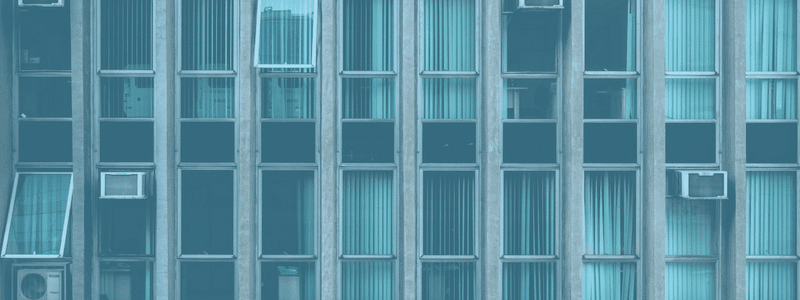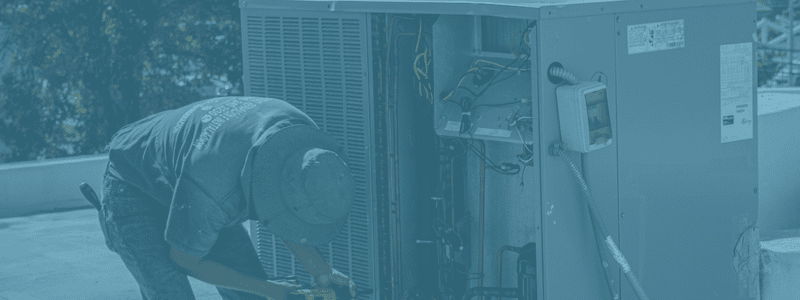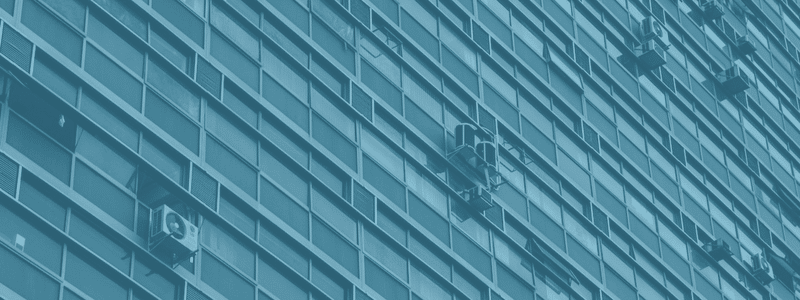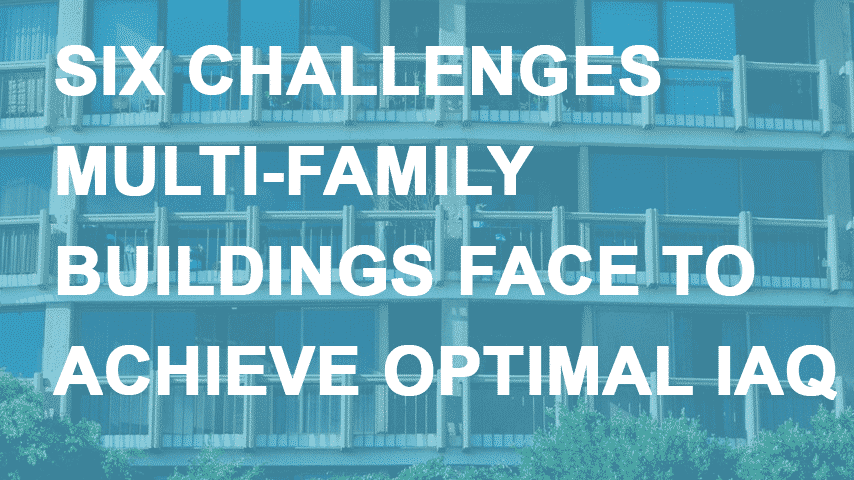Indoor air quality in multifamily housing landed on the radar of consumers worldwide in 2020 due to an airborne virus that turned into a global pandemic. However, improving the IAQ in some buildings proved more challenging than others.
Apartment dwellers face obstacles to optimal IAQ conditions as they are most likely sharing air with fellow residents, even if quarantined in their homes. Likewise, since the virus travels via droplets that can remain airborne for minutes to hours, an infected person can cough or even breathe in a hallway or shared common areas and infect people without ever encountering them.


Multi-family housing residents face IAQ risks in addition to those associated with COVID-19.
According to the Global Indoor Health Network, half of all illnesses globally can be traced to indoor air pollutants.
Multi-family buildings are particularly susceptible to experiencing issues with poor IAQ for a variety of reasons, including the following six challenges:
1. Air moves between apartments.
A variety of factors influence air movement in a building. For example, indoor conditions like temperature, humidity, and building design, and outside factors like wind velocity, direction, and outdoor temperatures. Inside a building, air naturally moves from higher-pressure areas to lower-pressure areas through any hole or passage, carrying humidity, dust, and pathogens. Therefore, buildings lacking proper seals are at risk of air moving directly from one apartment to another.
2. Polluted outdoor air isn’t fresh.
People commonly open windows to “let in fresh air” when their IAQ becomes problematic. However, what happens when the outdoor air is more polluted than the indoor air? As many multi-family buildings are found in urban areas, they naturally face a greater risk of outside air pollution. When apartment dwellers open their windows, they invite even worse air into their homes.
3. Older buildings weren’t designed with IAQ in mind.
Multi-family buildings usually weren’t designed for controlled IAQ until 1973 when the American Society of Heating Refrigerating and Air-Conditioning Engineers first published ventilation standards with IAQ in mind. As a result, most multi-family buildings in large urban centers like New York and Chicago were constructed before 1973. On the other hand, newly constructed multi-family properties are generally designed with ventilation systems that control the exchange of indoor and outdoor air and the movement of indoor air.


4. Open windows increase energy consumption.
The outdoor air is fairly free of pollutants. In that case, apartment residents might improve their IAQ by opening windows, allowing any polluted or stagnant indoor air to escape the dwelling. While this might be an effective strategy in some places, it also serves as a double-edged sword since opening windows often increases the energy an HVAC system needs to control the indoor climate properly.
5. Humidity is difficult to control in many multi-family buildings.
Controlling indoor humidity levels more effectively limits the spread of pathogens like COVID-19 than any outdoor air solution. Unfortunately, moisture levels can only be managed effectively in buildings with central air handling systems that humidify and dehumidify the air. Unfortunately, most multi-family buildings lack these features, putting apartment dwellers at greater risk of viral exposure in the winter when outdoor humidity levels are cold and dry. Residents can, however, utilize personal devices to try and control humidity levels in their units.
6. Multi-family buildings can be a haven for indoor pollutants.
Other residents aren’t the only source of indoor air pollution in multi-family housing. Sources like old asbestos, gas-powered appliances, paint, and cleaning products can negatively affect the IAQ in a multi-family building. Other indoor pollutants in multi-family housing include pesticides, smoke, furnishings, and even air fresheners.
Regular HVAC maintenance, including frequent filter changes, can only help to improve the IAQ in multi-family buildings. Motili’s multi-family clients benefit from preventative maintenance programs that have been shown to boost resident satisfaction by double-digit percentages.
What type of buildings has the poorest indoor air quality?
Office buildings have the poorest indoor air quality. They are so often cited for poor air quality that a term is even used to describe illnesses caused by a lack of clean indoor air in the workplace Sick Building.


What are the five main factors that affect indoor air quality?
The five factors that can affect indoor air quality are:
- Humidity Level.
- Poor Ventilation.
- Pets.
- Dust.
- Volatile Organic Compounds.
What is acceptable indoor air quality?
Acceptable indoor air quality is based on indoor CO2 concentrations above 700 parts per million (ppm) above outdoor CO2 concentrations will satisfy a substantial majority (about 80%) of the occupants.
What if you live in an apartment?
Apartments can have the same indoor air problems as single-family dwellings because many sources of contamination, such as indoor building materials, furnishings, and household products, are similar. Such sources cause indoor air problems identical to those in offices, such as contaminated ventilation systems, poorly located outdoor air intakes, or maintenance activities.
Solutions to air quality problems in apartments, as in homes and offices, involve such actions as:
- Eliminating or controlling the sources of pollution
- Increasing ventilation
- Installing air-cleaning devices
Motili HVAC Multi-Family Technology Solutions
Motili’s platform is one of the latest innovative solutions that allows property owners and managers to efficiently manage HVAC multi-family technology projects for multiple property types like apartment communities and commercial buildings.
Sustainability, automation, and data management are core values upheld throughout the HVAC process.
The Motili solution includes a web platform that provides detailed work status and reporting, automated scheduling and contractor dispatching, text and email notifications, and a mobile app for contractors. It can easily integrate with existing client systems. Our finely-tuned process boosts efficiency, reduces cost, and can ultimately improve customer satisfaction.
Motili’s cutting-edge technology will help property owners manage their HVAC and hot water systems through technology, proactive and reactive repair, and replacement projects.
The experts at Motili possess the knowledge and tools to properly guide you through all types of HVAC projects.












